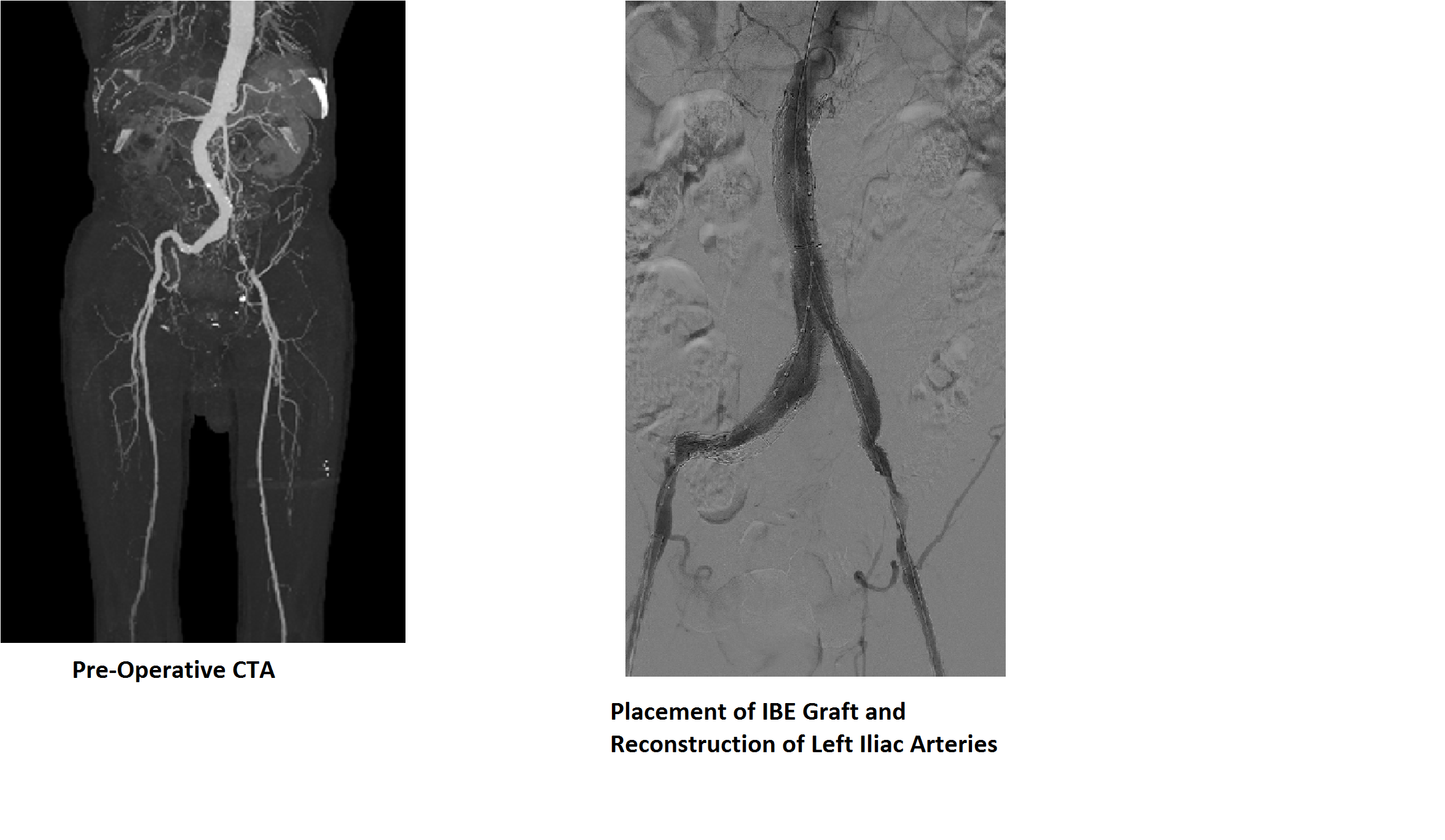ENDOVASCULAR TREATMENT OF CONCURRENT ILIAC ANEURYSM AND ILIAC OCCLUSIVE DISEASE
Anthony C. Feghali, MD, Babak Abai, MD.
Thomas Jefferson University, Philadelphia, PA, USA.
OBJECTIVES: 82 yo M with an incidentally discovered right 4.5cm iliac artery aneurysm and occluded left iliac vessels.
METHODS: History of HTN and chronic smoking (70 pack years). He initially presented for abdominal pain and diarrhea. Work-up included non-contrast CT which showed a 4.5cm right iliac artery aneurysm. Was found to have c. diff and treated. He then presented to vascular office where a formal CTA showed the right iliac artery aneurysm and occlusion of his left common, internal, and external iliac arteries. He reported 1 block left lower extremity claudication.
RESULTS: Given the presence of a large right iliac artery aneurysm and symptomatic left iliac occlusive disease we considered open repair with an aorto-bi femoral bypass and ligation of the iliac aneurysm. However given his age and the goal to preserve his only internal iliac artery we decided to proceed with an iliac branched endoprosthesis (IBE). If intra-operatively we could not cross the occluded iliac on the left, our bailout was to place a unibody aortic limb followed by a fem-fem bypass.
CONCLUSIONS: Operatively we gained bilateral femoral percutaneous access. We created a dissection plane on the left iliac and regained access into the aorta. We then balloon angioplastied the iliacs and created a channel. Following we placed a Gore iliac branched endoprosthesis (IBE). After snaring and successfully deploying the IBE into the right iliac system we then re-created the left iliacs. We extended our Gore covered limbs down the left iliac and then placed bare metal stents down the left external iliac. Completion aortogram showed coverage of the right iliac artery aneurysm with preservation of the right internal iliac artery. Post-op he recovered well. On follow-up visits his left lower extremity claudication is resolved and has been doing well. This case proved to be challenging based on treating iliac aneurysmal disease with contralateral iliac occlusive disease via an endovascular approach. We were able to treat his right iliac artery aneurysm with preservation of his only internal iliac artery. Further we were able to restore direct inline flow to his left femoral artery and treat his claudication. 
Back to 2019 ePosters
